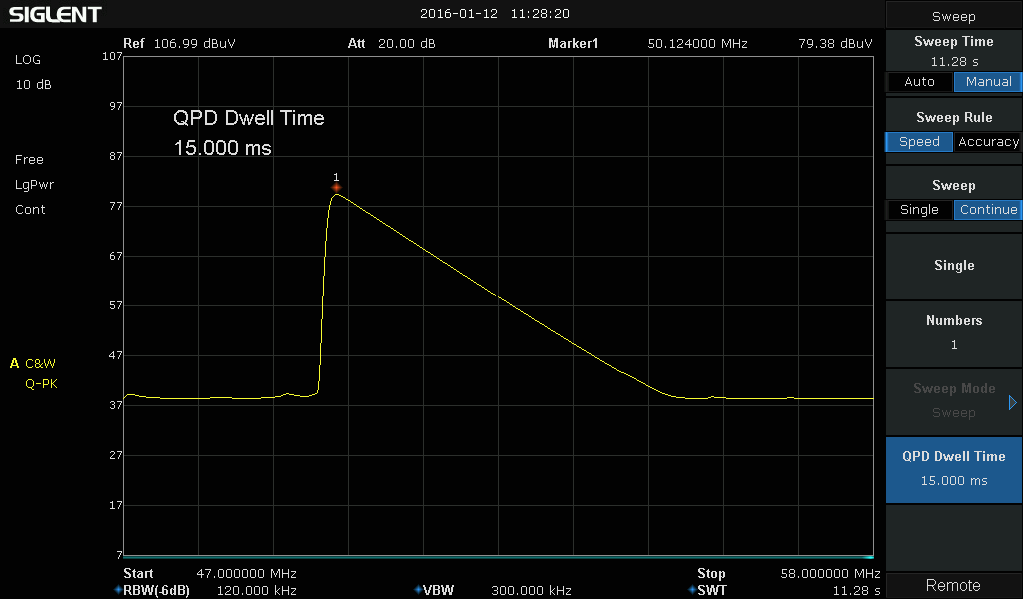

Operates up to 1.Description Limited time offer, Over 40% off the price of the Rigol Pre Compliance Bundle! Bundle consists of: 1-off Rigol EMI-DSA800 EMI filter and quasi-peak detector licence, 1-off Rigol NFP-3 near field probe set, and 1-off Rigol S1210 EMI pre-compliance PC software licence īroadcast transmitter, microwave, satellite system evaluation and troubleshooting and has been with the station for 30 years. Joey Gill is chief engineer at WPSD-TV in Paducah, Ky. The Rigol folks have brought the price of a quality spectrum analyzer down to the point that almost any broadcaster (or individual) can afford one. When you consider all of the features the analyzer possesses, it’s really amazing that it costs less than $1,300. While it would be nice if it operated above 2 GHz (and could be powered from a 12 Volt DC supply for mobile applications), these aren’t really deal breakers, considering its price. The buttons are very solid, and the unit feels very “stocky” when you pick it up. However, I can tell you that the unit operated for about a month in my office, and I played with it at every opportunity (I even used it to troubleshoot a couple of wireless mic problems). With an instrument as complex as the Rigol DSA 815, there’s no way to write about each and every menu.
#Rigol dsa815 eevblog generator
I even looped the tracking generator back into the DSA 815 and confirmed that it works as specified. Obviously most users don’t expect to use their spectrum analyzer as a frequency counter, but it’s comforting to know that the Rigol is this accurate.ĭuring the next few days I kept the unit on, looking at our competitors’ ATSC signals, and checking out some amateur radio transmissions I found. The tolerance is ±54 Hz, so 19,392,657 is well within the margin of error. I need to mention that measurement was made through a Harris TFX-1transport frequency extractor which allows the use of a frequency counter to confirm compliance and monitor the SMPTE 310 stream for primary clock reference (PCR) errors. After a quick calibration of the Rigol, I turned on its averaging function, expanded out the span, and read a center frequency of 19,392,657 Hz. According to my HP 53132A, that frequency was 19,392,655 Hz. As a test of the Rigol’s frequency accuracy, I connected the output of our ATSC SMPTE 310 encoder to the unit.

The output from the filter tap of an ATSC low-power transmitter operating on Channel 36 as observed on the Rigol spectrum analyzer. After swapping out a pinched coax cable, and checking the antenna, the RF returned to a healthy −30 dBm.

The RF output of the transmitter was 76.2 MHz and with the Rigol in my office and the truck just outside the window, I made a quick measurement of the RF peak level (−49 dBm). Just after I checked out the analyzer, we began having issues with an IFB transmitter in one of our live broadcast trucks and I decided to press the Rigol into service to troubleshoot the problem. The learning curve on this unit is almost nonexistent. The buttons and menus are very intuitive, and the nomenclature is hauntingly similar. I found that for anyone who has used “late generation” spectrum analyzers, the DSA815 will be comfortingly familiar. Over the years, I’ve had access to many spectrum analyzers, including those from Hewlett-Packard, Tektronix and Avcom, and most recently, the Agilent E4407B. I connected a small headset and was able to verify the demodulator feature of the unit as well. With this simple setup, I was able to tune the DSA 815 to local AM and FM radio stations. For an RF input, I attached a small “antenna” using an “N” to “F” adaptor. After the unit arrived, I unboxed it and applied power.


 0 kommentar(er)
0 kommentar(er)
